'Lord Of The Rings' Has Always Been Beloved. The Pandemic Reminded Us Just How Great It Is
But when a mission that would determine the fate of their little world and the much wider one was foisted upon them, they heeded the call. They journeyed through the most treacherous terrains of Middle-earth for years on the word of a wizard. They joined a band of bellicose strangers who'd become their brothers. They looked evil in the eye more than once. They made dangerous mistakes and witnessed innumerable tragedies.
They persevered and ultimately made good on their promise, returning home, forever changed by what they'd seen and done
Peter Jackson's theatrical adaptation of "The Fellowship of the Ring" was released 20 years ago this month, just three months after the September 11th attacks. It was a light then for Americans and global filmgoers alike, a winning depiction of friendship and good people doing impossible things that could make even the most fantasy-averse viewer weep.And it's been a light for viewers throughout the pandemic, too, a soft place to land when the pain of reality overwhelms and a font from which to draw strength to keep going.
Behind the scenes of how "Lord of the Rings" makes movie magic.
"The story and the characters tell the truth about what it means to be human," said Sean Astin, whose Samwise is the heroic heart of the films, in emailed comments to CNN. "The journey is an immersive and complete tour through the spectrum of ideas and emotions we all share." We can't always control the darkness we're dealt. But it's like Gandalf says in "Fellowship," when Frodo laments that he wishes he'd never encountered the ring and endangered his friends: "So do all who live to see such times. But that is not for them to decide. All we have to decide is what to do with the time that is given us." And, as a fictional road map for how to live throughout unprecedented times, "Lord of the Rings" is one that will endure.'LOTR' is escapism with a purpose
Though Middle-earth mastermind J.R.R. Tolkien took his worlds and the characters within them seriously, he also intimately understood the escapist inclinations of his readers and the power of his stories to transport, inspire and save. Tolkien defended escapist fantasy fiction in his essay "On Fairy-Stories." In that essay, Tolkien stated that escapism is "very practical, and may even be heroic" -- readers and viewers who engage with fantasy stories aren't abandoning the real world, but preparing themselves to better face it."Why should a man be scorned if, finding himself in prison, he tries to get out and go home?" he wrote. "Or if, when he cannot do so, he thinks and talks about other topics than jailers and prison-walls? The world outside has not become less real because the prisoner cannot see it. In using escape in this way the critics have chosen the wrong word, and, what is more, they are confusing, not always by sincere error, the Escape of the Prisoner with the Flight of the Deserter."
"Lord of the Rings" fans, by engaging with the story, "do for a time escape from our own world and our own troubles, but then, of course, we may also return to them better equipped to handle them; strengthened by the respite and perhaps even inspired to face the difficulties and evils that confront us," said Corey Olsen, a scholar known as the "Tolkien Professor" for his in-depth study of Tolkien's works, and president of the nonprofit Signum University.Corey Olsen analyzes Tolkien's works with students at Signum University.
Tolkien started writing while recovering in a hospital bed from an illness he contracted during the Battle of the Somme in World War I. The world was wedged between wars when the first volume of "Lord of the Rings" was published in 1954, and the aftershocks of 9/11 were still loud when its adaptation, "The Fellowship of the Ring," hit theaters.What keeps Olsen returning to the story, both the books and films, he said, is what he's learned about himself and the world throughout his life. The lessons the characters impart, he said, have been "a major part of the fabric of my worldview since long before I understood what that means."
"I have learned as much about life, about doing the right thing, about facing adversity, about interacting with others from Tolkien than I have from almost any other source," he said.
Viewers discovered 'LOTR' for the first time or fell deeper in love during the pandemic
For all the series' acclaim, it took a pandemic for some would-be fans to finally enter the fantasy world they'd long been encouraged to visit.
Olivia Simone, a voracious reader who hosts the YouTube channel iLivieSimone, spent part of the pandemic finally dusting off the unread books on her shelf, including Tolkien's works, and then watching their adaptations to compare.Olivia Simone finally read and watched the full "Lord of the Rings" trilogy this year and loved what she found.
She wanted to finally understand the memes she'd been seeing everywhere -- remember when it was impossible to escape variations of Sean Bean's Boromir saying "one does not simply walk into Mordor"? And so she read "The Hobbit," a prequel novel that follows Frodo's uncle Bilbo and his own dalliance with the One Ring (and Gandalf!), and the "Lord of the RIngs" and then watched all six films based on the books. She and her sister plopped down on the couch and devoured the extended editions of the movies, filmed their reactions and posted them on her channel. The verdict? She loved them. The characters and locales she visualized while reading were brought to life immaculately in the film, she said in her YouTube review. But what affected her the most was the unsinkable friendship between Sam and Frodo. Even when the ring's corrosive power starts to wear down his dear "Mr. Frodo," Sam is his staunchest supporter, saving his life and restoring his faith to finally destroy the One Ring."I found it so moving that those two had endured so much yet were still continuing on despite how hard it clearly was to take even one step forward," she told CNN. "In the context of the pandemic, friendship and just putting one foot in front of the other even when things are rough rings even more true, for sure."
The pandemic also provided the time -- plenty of it -- for Tolkien devotees to delve even deeper into his world. Take Matt Graf, who first fell head-over-heels with Tolkien's world when he watched "Fellowship" on DVD in 2002. In January 2020, on a whim, he started a YouTube channel -- "Nerd of the Rings" -- where he dissects esoteric elements of "Lord of the Rings" and the wider world of Middle-earth.Matt Graf has found a community of Tolkien fans through his YouTube channel, "Nerd of the Rings."
Within two months of the channel's founding, "Nerd of the Rings" would become a social lifeline, connecting Graf to other Tolkienites who devoured his analyses.
"As someone who is a natural worrier, there is no doubt in my mind that spending extra time in Middle-earth during those challenging days was a great comfort through it all -- not just for me and my viewers, but for millions around the world," he said.
For years, Graf said, he's taken solace in "Lord of the Rings" through health issues and unmooring personal losses. Now, he shares histories of supporting characters like Shelob the giant spider and even interviews cast members like John Rhys-Davies, who played the stubborn and loyal Dwarf Gimli in Jackson's films."Despite overwhelming odds and knowing there is only a fool's hope at success, our heroes resolve to do what they can -- should they ultimately fail, they will fail while trying," he said, a message he carries with him off the page and screen.
Fans' connection to 'LOTR' changes as they grow
As fans and stars of "Lord of the Rings" live with the story and return to it throughout their lives, they find their understanding of it has changed.
Astin said major events from the January 6 insurrection, the Covid-19 pandemic and the growth of his children "make each passage in the story or moments in the film a sort of talisman ... A divining rod that resonates differently in different moments.""I continue to learn things about Sam that I never knew," he said, noting that he thinks about what being an honorary ring bearer meant to the hobbit. "My sense of that journey and what it means to him, and what death means to me are reexamined in my life daily."
For Graf, the character of Théoden, king of Rohan, affects him more deeply now than it did when he he first fell in love with the series.
"As a father who has experienced the heartbreak of miscarriages, Théoden's grief at the loss of his son and his declaring 'no parent should have to bury their child' cuts directly to my core," Graf said. "As a father of a newly adopted daughter, I relate to Théoden's relationship with Éowyn in an entirely different way. I now realize exactly what Théoden means in the books when he calls Éowyn 'dearer than daughter.'"
The timeless adventure of 'Lord of the Rings' endures
We've lived with the "Lord of the Rings" films for 20 years and the books for nearly 70 years. It's a testament to the strength of the story that all of them still hold up -- and that new members are still being drawn to its substantial fellowship. Soon, there will be new stories to tell with Amazon's "Lord of the Rings" series. Graf found a community of like-minded Tolkienites with "Nerd of the Rings," which has now grown to more than 400,000 subscribers. He's harnessing their support now to inspire young people to love Tolkien, rallying his viewers to donate copies of "The Hobbit" to children's hospitals.Graf interviewed Gimli himself, John Rhys-Davies, on his YouTube channel.
Dominic Monaghan and Billy Boyd, who play Merry and Pippin respectively in the films, have a relationship that mirrors that of their characters. This year the pair launched a podcast, "The Friendship Onion," where they recall their time on set, trade stories and pal around with castmates (including Astin). The results are giddy and delightful -- in one episode, Astin, Monaghan and Boyd collapsed into giggles remembering how excited Jackson was to show them a CGI preview of Middle-earth's foliage when the jetlagged cast first landed in New Zealand.Olsen, meanwhile, is leading classes on Tolkien's works at Signum University and hosting weekly programs that dissect the books. He said his model of leadership is inspired by the characters he's known for years: the confident Aragorn, the good-natured Gandalf, the faithful and humble Sam.
"If at the end of my career I prove to have been a good leader or entrepreneur, I will owe most of that to Tolkien's influence," he said.
And Astin is embarking on his fourth "cover-to-cover journey" through Middle-earth, this time with members of his book club on the app Fable. The books are a commitment, he said, but one he's willing to make with readers who love the series as much as he does."We will feel and think and dream our way through it," he said.
The Nativity Of Our Lord Jesus Christ
As it is written in John 3:16 KJV, “For God so loved the world, that He gave His only begotten Son, that whosoever believeth in Him should not perish, but have everlasting life.” Praise God for His divine plan for our salvation: To believe in Jesus Christ as our Lord and Savior and we shall have eternal life.
This brings us to, “The Nativity of the Lord Jesus Christ.” Jesus’ birth brought Light into a dark world. Jesus’ birth brought The Prince of Peace into a troubled world. Jesus’ birth came to bring all born-again believers to our Heavenly Home.
We, as born-again Christians, celebrate the birth of Jesus as our supernatural gift from Almighty God. The birth of Christ is the day God entered into His created world as a man. We worship the one and only TRUE GOD, the great I AM. Jesus came to fulfill the will of His Father. Jesus is God personified in love.
Thank You, Jesus, for being our Perfect, Sacrificial Lamb of God. Thank You, Jesus, for the Precious, Holy, Redemptive, and Resurrected Blood You shed on the cross at Calvary. Thank You, Jesus, that we can pray any time, day, or night to our Heavenly Father in Your Name as instructed in The Holy Bible.
Now in the picture of the Nativity Scene we see Mary, the virgin mother of Jesus. Remember the angel Gabriel told her the baby would be named Jesus. The babe was wrapped in swaddling clothes, lying in a manger. Joseph, His earthly father, is in the picture also.
Jesus is a gentleman. One must invite Him into their heart as it is written in Romans 10:9-10 KJV of God’s Word. We thank God for the gift of The Holy Spirit that lives in us. Once we are saved, our names
are written in the Lamb’s Book of Life, which is our reservation in our Heavenly Home for eternity.
The Angels appeared unto the Shepherds, “Glory to God in the highest, and on earth peace, good will toward men.” Luke 2:14 KJV.
This holiday is the season for giving gifts to loved ones and friends, so please offer them Jesus. Merry Christmas and Happy New Year. Love,
The Rev. Jessie Reed is pastor of Bethel AME Church in Winfield. “Come worship with us at 11 on Sunday mornings.”
‘Lean Very Heavily On The Lord’: Loss Of Loved Ones Particularly Felt As Christmas Approaches
After Ginny Webb’s husband, Vincent, set up the Christmas tree, he would periodically check on how she and their granddaughter Harper were decorating it and offer encouragement.
Ginny, 66, of Frisco, Texas, wasn’t eager to decorate the tree this year without her husband of 33 years, who died unexpectedly in August from a cerebral hemorrhage, but Harper convinced her that they should carry on the tradition.
“It was just different this year,” she said. “We did it, but our hearts weren’t 100%. [Harper] made as much of an effort as I did. I could tell she was trying to — but it was different.”
Webb is among many Catholics who have recently lost a loved one and are working through grief when family gatherings, memories and other aspects of the Advent and upcoming Christmas season can unexpectedly trigger painful emotions.
While Vincent Webb’s death wasn’t related to the novel coronavirus, Catholic therapists say many of their clients have lost loved ones to COVID-19. They talk about spiritual and practical ideas for coping with grief during the holidays and beyond. And while COVID deaths are felt, families whose loved ones died from violence face additional trauma.
The COVID-19 pandemic is responsible for nearly 800,000 U.S. Deaths, according to the Centers for Disease Control and Prevention. For each death of a close relative, approximately nine people are bereaved, according to the U.S. National Academy of Sciences.
And in light of the fatal tornadoes that hit the American heartland in recent days, more people are grieving as Christmas approaches.
A survey released last month revealed that 36% of Americans weren’t looking forward to the holidays this year because of feelings of grief or loss.
Dealing With Loss
“It seems like so many people have been touched by so many deaths, so it’s that compounding of it, where I can’t even grieve for my mother because then three months later my brother passed away,” said Dana Nygaard, a therapist at Christian Comfort Counseling in Plano, Texas, whose clients range from age 18 to 70.
Hospital-visiting restrictions have eased since last year, but some feel guilty about not being able to be with their loved ones at death, she said, adding that postponing funerals because of lockdowns also complicated grieving.
Whether a person is grieving one or more losses of loved ones or another devastating loss, compounded grief is real and harder at this time of year, said Jeannie Ewing, a Catholic writer from Fort Wayne, Indiana, who writes on grief, redemptive suffering and waiting.
When memories are triggered, they can be an invitation for the Lord to enter into our grief, if we allow ourselves to cry and remember, said Ewing.
“Part of grief is moving through,” she said. “It’s not about bypassing something; it’s not ignoring something. When it comes to you, it’s an invitation. It’s an aspect of your healing.”
Grieving has been a day-by-day process for Webb, who sometimes struggles with loneliness.
“You just feel like you’re underwater a lot or like you have a cloud over your head,” she said. “You have to rise above that every day. I can’t let myself be too clouded or underwater because then sadness envelops. … I lean very heavily on the Lord.”
Just as healing is unique to each person, it doesn’t happen on an exact timeline, Nygaard said. The five stages of grief are denial, anger, bargaining, depression and acceptance, but there is no set schedule for healing.
Because grieving consumes a lot of energy at a time when even the non-grieving get tired, Nygaard suggested lowering seasonal expectations and asking for, and accepting, help.
Starting a new activity might bring life, but Nygaard noted that continuing traditions often brings much solace.
Memorializing a loved one can offer comfort, said Janet Sturtz, a social worker at Rejoice Counseling Apostolate in Houston.
Sturtz suggested lighting a candle at church, accompanied by prayer, or writing a note to a loved one and placing it by their Christmas stocking.
Tears of grief have healing properties and communicate to others that we’re suffering, Nygaard said. “When someone is crying tears of grief, those tears have a different chemical composition than when chopping onions.”
Grieving can bring up many different emotions, and it teaches us to be merciful to ourselves and others, Ewing said.
Support Through Suffering
Grieving families whose loved ones died in violence need mercy at this time of year, which is supposed to be joyful, said Mary Ellen Russell, community affairs director for the Archdiocese of Baltimore, whose Grief Ministry reaches out to those families in Baltimore City.
“I know the personal stories of families who suffer especially during the holidays, knowing that there’s an empty plate at the table at a time when everyone cherishes being together, and they keenly miss the person that they lost.”
Started two and a half years ago, the grief ministry provides prayer and other support to families who lose loved ones to homicide each week in the city, Russell said.
So far, in 2021, the city has seen 319 reported homicides. According to 2019 FBI data, Baltimore has the second-highest murder rate in the country, after St. Louis, though violent deaths are surging in other cities such as Chicago, too. Many victims are young Black men, Russell said.
Each week the ministry sends the victims’ names to archdiocesan parishes, and many read them during the Sunday Prayers of the Faithful, she said. Working with the Baltimore City Police Dept., volunteers write sympathy notes to the families, both after the death and on the one-year anniversary. Partnering with the police and a local nonprofit family grief support center, ministry volunteers prepare food packages for the families.
“One of the things we hear over and over again is there’s no way to compare this kind of loss to other kinds of loss — it’s such a complicated level of trauma to be dealing with,” Russell said. “And to be such a daily part of life for so many communities, I think, has such an overarching traumatic effect on the communities.”
Continuing to be present to a grieving person is among the best ways to help them, article sources said.
The supporting person needs to initiate assistance rather than waiting for the one grieving to request it, Ewing said.
As Sturtz said, “The ministry of listening to their pain is so important and affirming it, normalizing it for their situation.” If the person is comfortable, it’s okay to talk about the deceased and bring up fond memories or share a poem or music, she said.
Christ’s birth can’t be separated from his death, and so the losses and rebirth we experience often coincide or overlap, Ewing said.
“I think another beautiful beacon of the Christmas story is laying our misery at the foot of the manger: That’s what he wants most from us,” she said. “If the only prayer we can give him is our spiritual poverty, then that’s a powerful gift.”


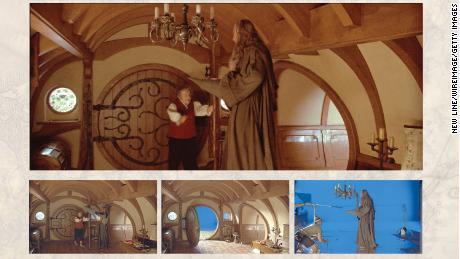
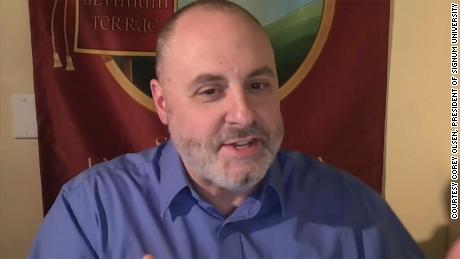
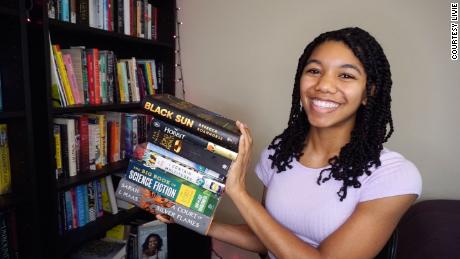
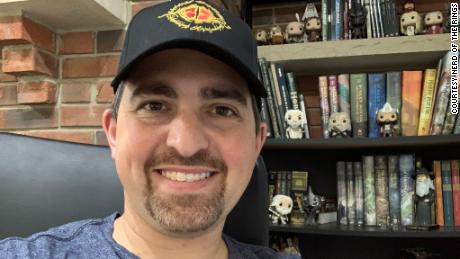
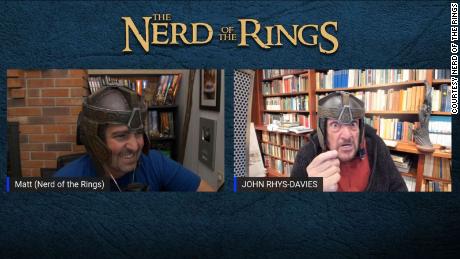
.gif)

.gif)
.gif)
